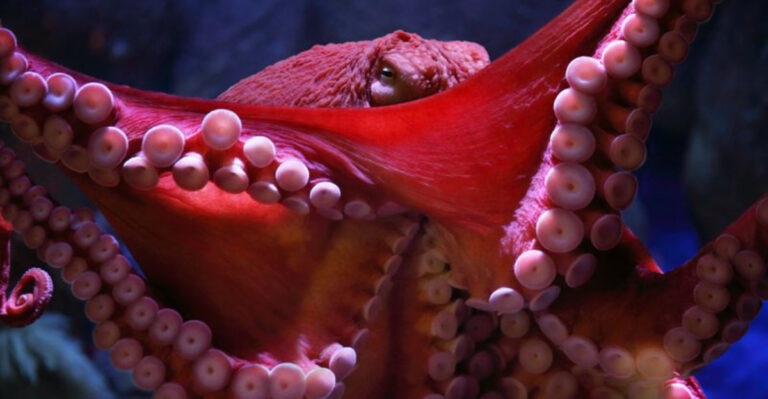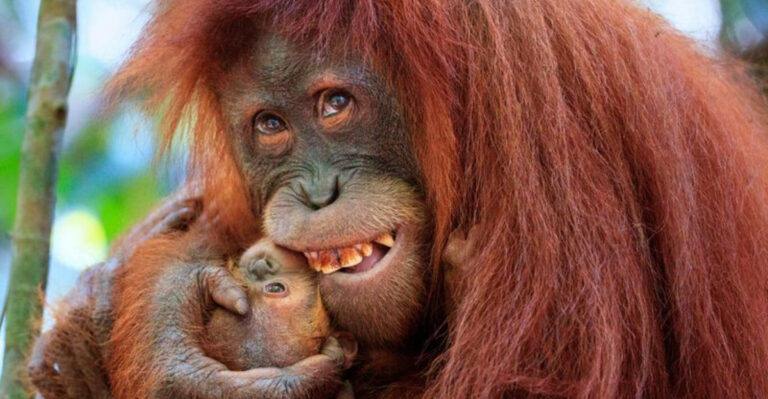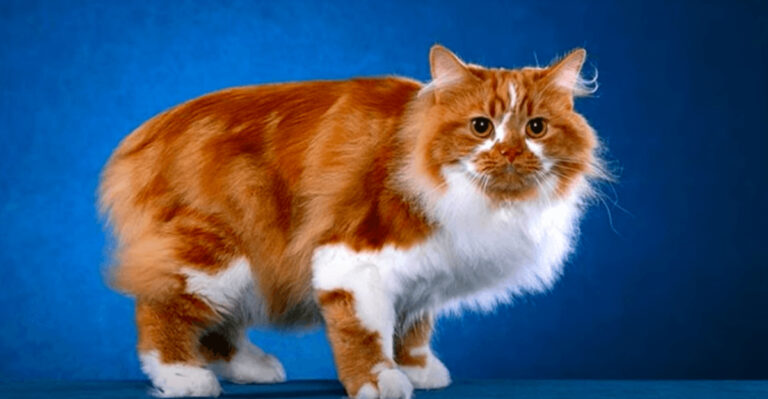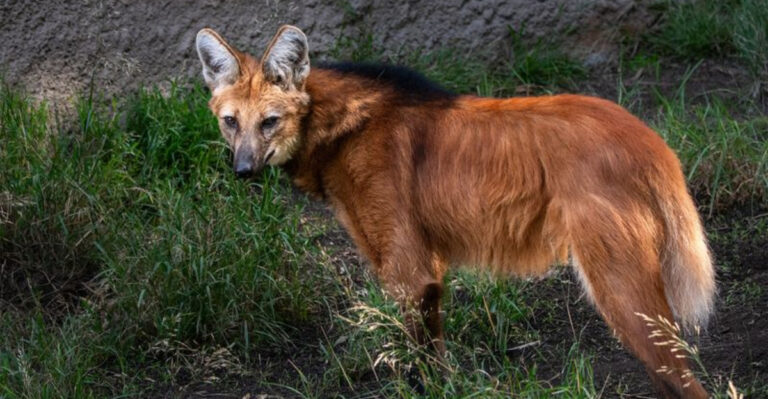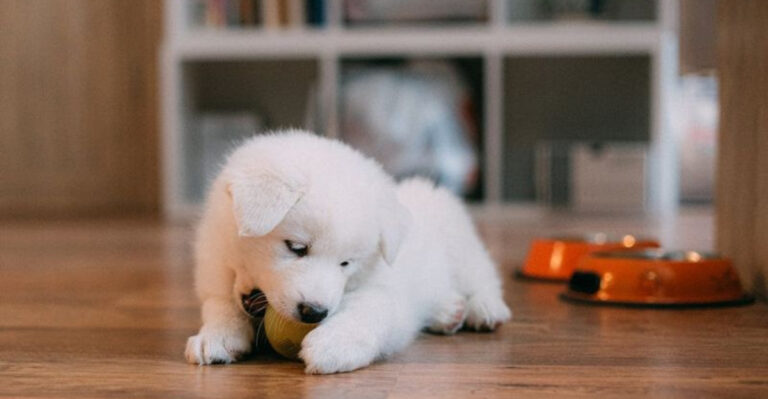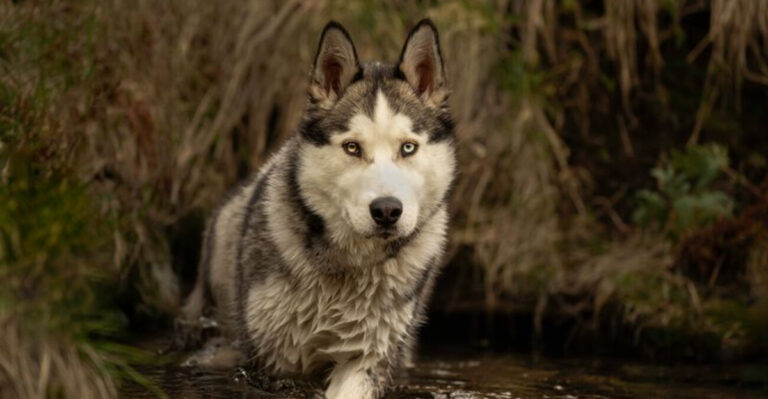10 Reasons Why Cats Rub Against You
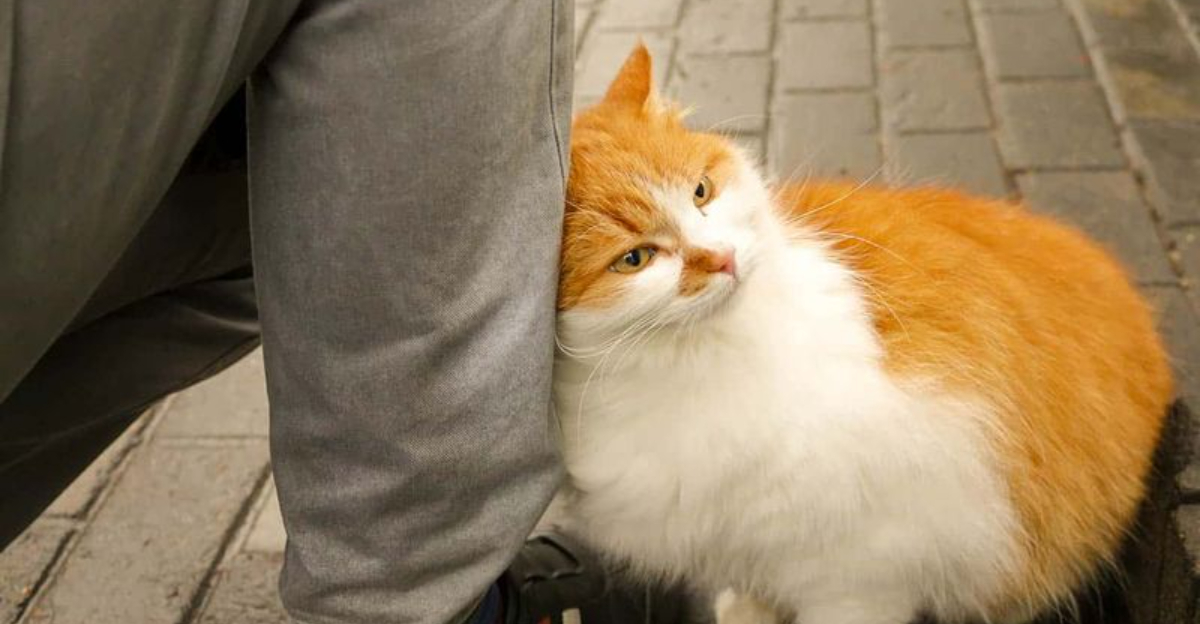
Cats have been companions to humans for centuries, and their quirky behaviors never cease to fascinate us. One of the most puzzling yet endearing actions is when your feline friend rubs against you.
It’s a gesture filled with meaning, and understanding why cats do this can deepen the bond between you and your pet.
From marking their territory to expressing affection, each rub is a unique form of communication. Join us as we explore some of the intriguing reasons behind this feline behavior, each one shedding light on the mysterious world of cats.
1. Scent Marking
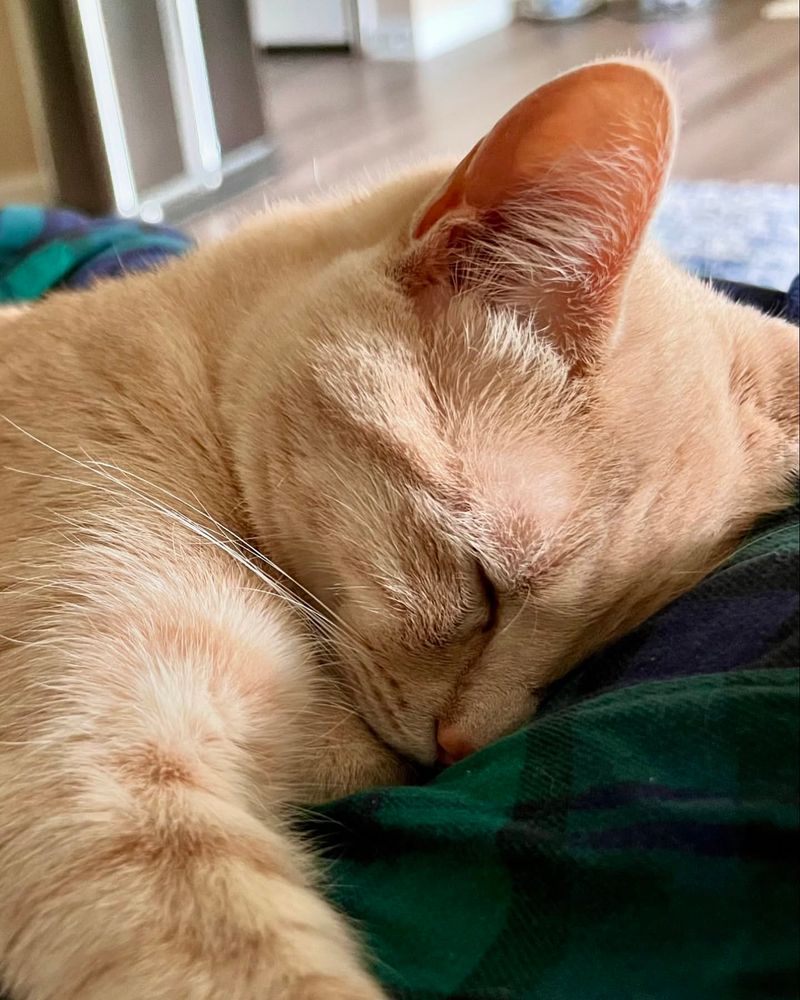
Cats are territorial creatures, and rubbing against objects or people is one way they mark their domain. When a cat rubs its body against you, it deposits its scent, creating a familiar environment. This behavior is rooted in their wild ancestry, where scent marking was crucial for survival.
The glands located around their face, tail, and paws release pheromones. By rubbing against you, your cat is ensuring that your scent is mixed with theirs, creating a comforting blend. This act signifies that they trust you and consider you part of their territory.
Moreover, scent marking is a way for cats to communicate with other animals. It sends a clear message that you are a cherished part of their world, protected by their invisible boundary. So, when your cat rubs against you, it’s sharing a piece of its identity, a gentle reminder of your bond.
2. Seeking Attention
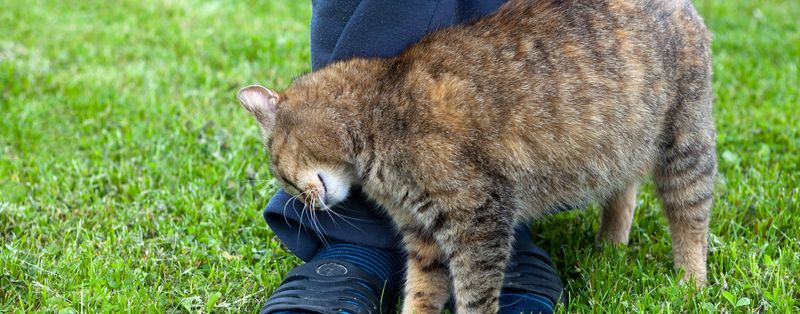
When your cat rubs against you, it might simply be seeking your attention. Cats are known to be independent, but they also crave interaction with their human companions. This behavior can be seen as a gentle nudge, a way of saying, “Hey, notice me!”
In many cases, cats choose to rub against their owners when they are feeling social. It’s an invitation to engage, whether it’s petting, playing, or simply sharing space. This straightforward action is a testament to the trust they place in you, as they wouldn’t seek attention from someone they didn’t feel comfortable with.
Additionally, when a cat seeks attention through rubbing, it often accompanies other signals such as purring or a flicking tail, providing a full spectrum of communication. So, when your feline friend brushes up against you, it’s not just a random act – it’s a request for companionship.
3. Affection and Love
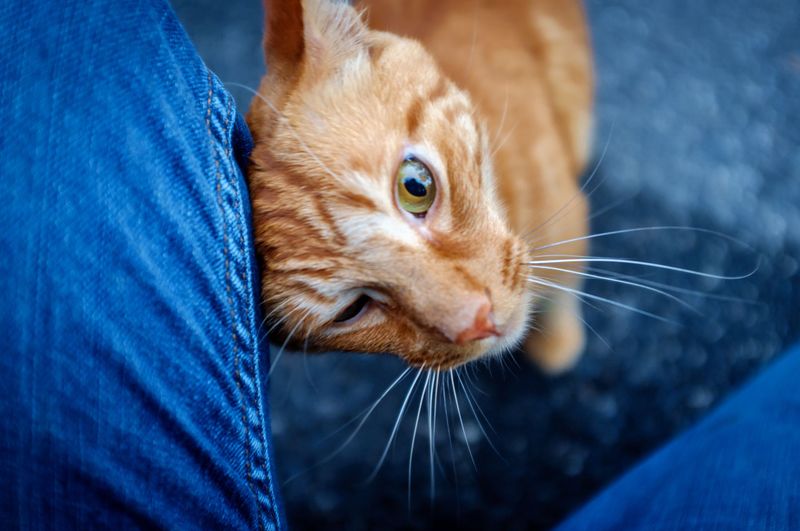
Cats express love in many ways, and rubbing against you is one of the most heartfelt gestures. Unlike dogs, cats don’t always show affection openly, so when they do, it’s something special. This behavior is akin to a hug, a way for them to demonstrate their fondness for you.
When a cat rubs its face against yours, it’s sharing a moment of intimacy. The act of pressing their body close and lingering is a demonstration of trust and love. It’s a gentle reminder that they hold you in high regard.
Furthermore, this behavior is often accompanied by purring, signaling a state of happiness and contentment. For cats, affection is a delicate balance of independence and closeness. Rubbing is their way of bridging that gap, offering a tender connection in a uniquely feline manner.
4. Greeting Ritual
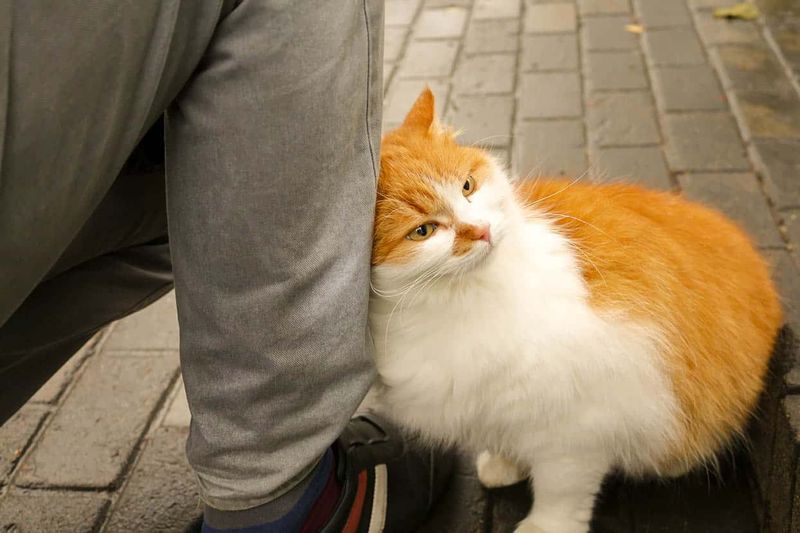
Cats have their own way of saying hello, and rubbing against you upon your return is their version of a greeting. This ritual is ingrained in their social behavior, a warm welcome back to their territory. It’s akin to a handshake or hug in human terms.
When a cat greets you with a rub, it’s acknowledging your presence and reaffirming your bond. This habitual action is a sign of recognition, showing that they’ve missed you. The tactile interaction strengthens the connection you share with your pet.
Additionally, the greeting rub is often accompanied by a soft meow or a purr, further enhancing the welcoming experience. It’s a moment of mutual joy, a feline embrace that speaks volumes. Your cat’s greeting ritual is a small gesture with a big heart.
5. Comfort and Security
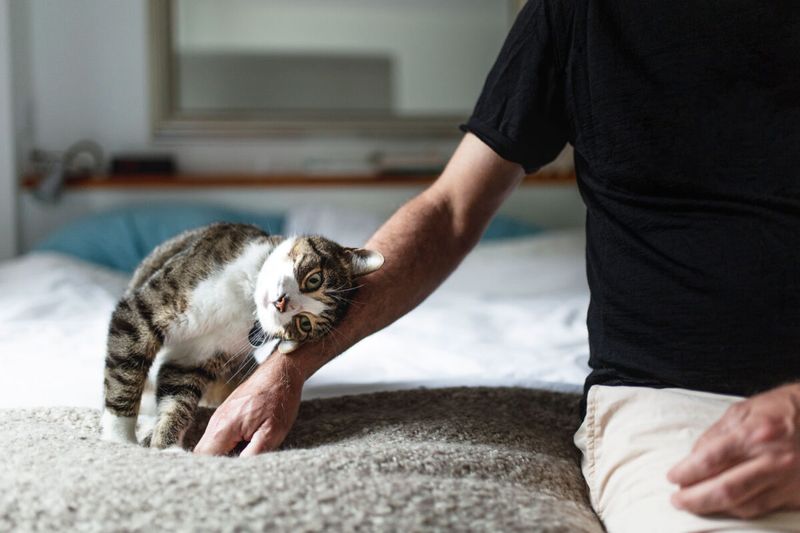
When a cat rubs against you, it seeks comfort and security. This behavior is reminiscent of a kitten nuzzling its mother, providing a sense of warmth and safety. Your presence offers reassurance, and rubbing against you is a way for your cat to feel secure.
Cats often choose to rub against their owners in moments of vulnerability or uncertainty. Whether it’s a new environment or a loud noise, your scent and touch provide a calming influence. It’s a form of grounding, helping them feel anchored and protected.
Moreover, the comfort rub is a two-way street. It’s not just about their comfort but also about creating a peaceful atmosphere for both of you. It’s a shared experience that enhances the bond, a silent understanding that you are their safe haven.
6. Social Bonding
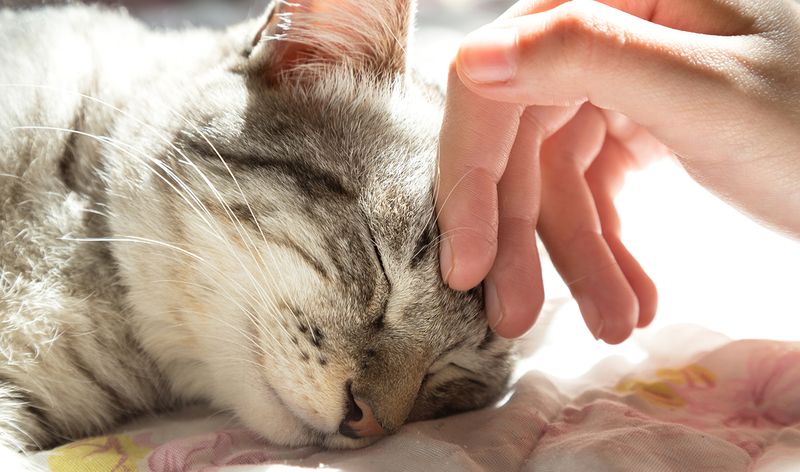
Rubbing against you is a social bonding activity for cats. In the wild, cats engage in communal rubbing to reinforce social hierarchies and relationships. Your cat sees you as part of its social group and uses this behavior to strengthen your bond.
Engaging in this social ritual is a way for your cat to include you in its world. It’s a sign of acceptance and camaraderie, signaling that you are more than just a caretaker – you are a friend. This behavior is often seen in multi-cat households, where cats swap scents to solidify their connection.
Furthermore, social rubbing enhances the group scent, creating a unified identity. When your cat rubs against you, it’s not just an act of affection but a declaration of belonging. This shared scent becomes a comforting reminder of unity.
7. Territorial Declaration
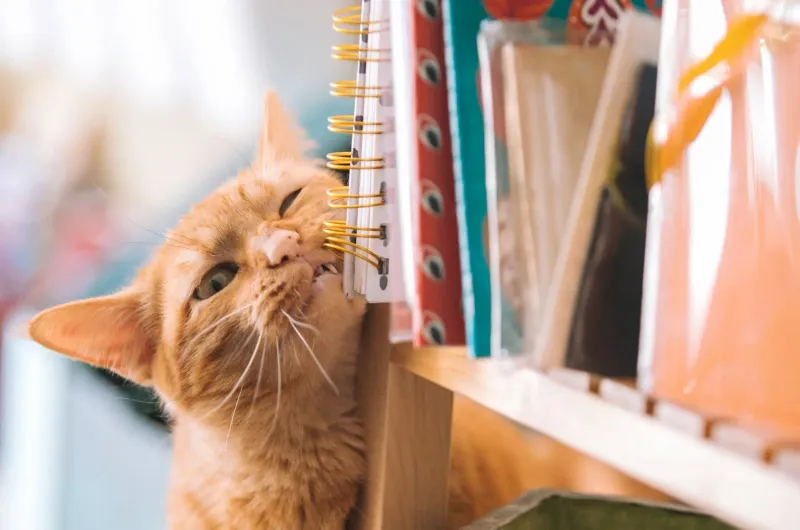
Cats are naturally territorial animals, and rubbing against you is a declaration of ownership. By doing so, they claim you as part of their territory, reinforcing their presence and control over their environment. This instinctual behavior is a nod to their wild ancestors.
When a cat marks you with its scent, it’s a way of saying, “This is mine.” It’s a protective measure, ensuring other animals are aware of your cat’s claim. This territorial marking is an essential aspect of feline communication, conveying boundaries and relationships.
Additionally, the territorial rub can extend to objects and spaces, as cats ensure their world is layered with familiar scents. It’s a continuous process that maintains harmony in their surroundings. Your cat’s territorial behavior is more than instinct – it’s a demonstration of their identity and connection to you.
8. Instinctual Behavior
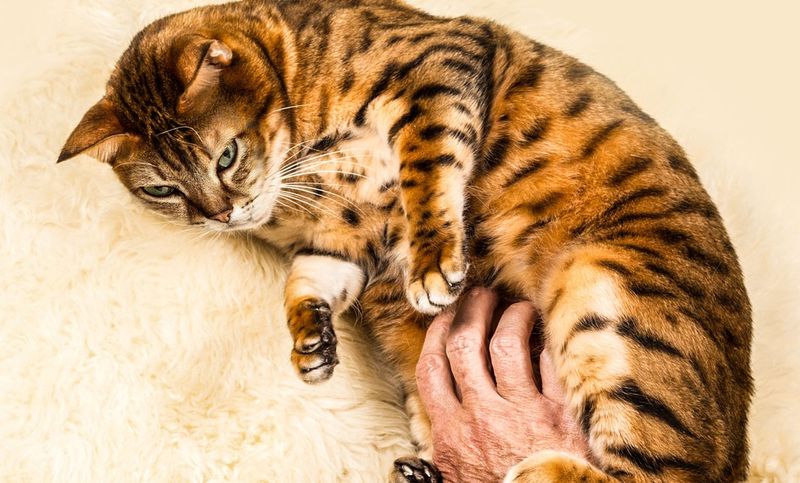
Rubbing is an instinctual behavior deeply embedded in a cat’s DNA. From wild ancestors to domesticated pets, this action serves various purposes, from communication to survival. It’s a fundamental aspect of being a cat, reflecting their natural instincts.
This behavior is not only about scent marking but also about exploration and curiosity. Cats use rubbing to gather information about their environment, testing textures and scents. It’s a way to understand their world and assert their presence within it.
Moreover, the instinctual rub is a blend of learned behavior and inherited traits. It’s a reminder of their wild roots, a connection to their past that shapes their present actions. For cats, rubbing is a multifaceted tool, a primal gesture that transcends the mundane and taps into their core nature.
9. Communication with Humans
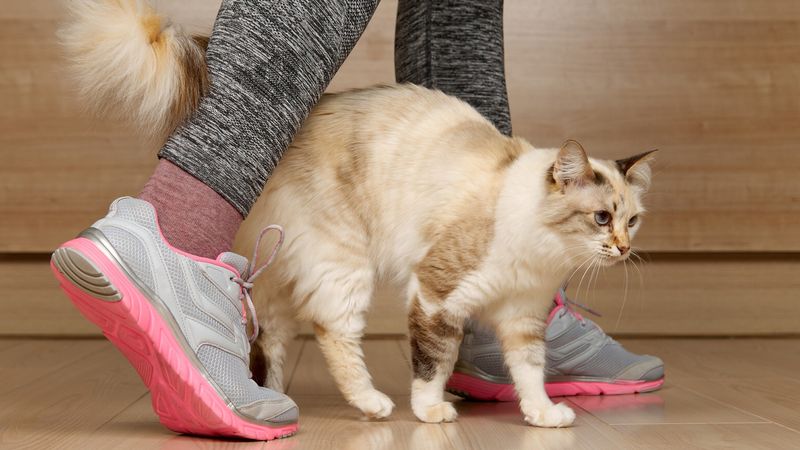
Cats have a unique way of communicating with humans, and rubbing against you is a silent form of conversation. It’s their way of conveying messages without the need for words, a subtle dialogue between species. This behavior is rich with meaning and intent.
When a cat rubs against you, it might be asking for food, attention, or simply acknowledging your presence. Each rub is nuanced, reflecting their mood and desires. Understanding these cues enhances the human-cat relationship, allowing for better interaction and harmony.
Additionally, this form of communication is a testament to their intelligence and adaptability. Cats have learned to live alongside humans, developing ways to express their needs and feelings. The rubbing gesture becomes a bridge between worlds, a gentle reminder of the unique bond shared between you and your feline friend.
10. Playful Interaction
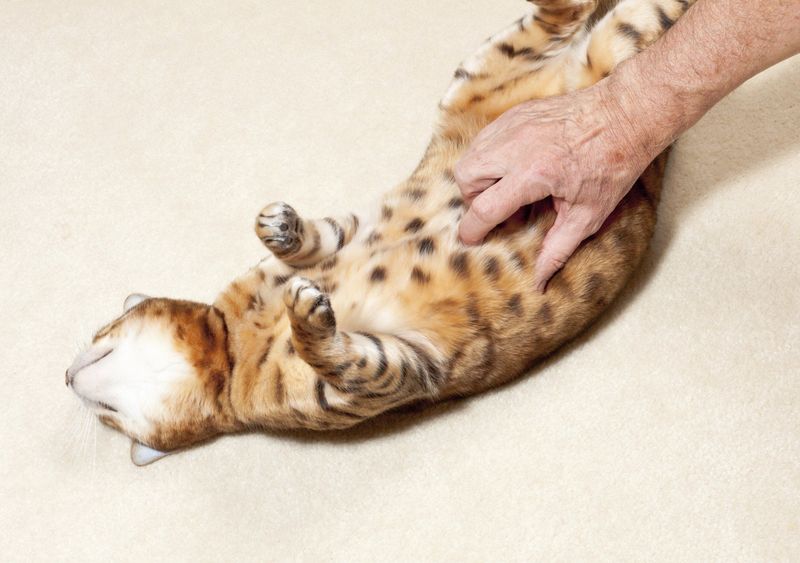
Rubbing can also be a playful gesture, an invitation to engage in fun and games. Cats often use this behavior to initiate interaction, signaling their readiness for a playful session. It’s a light-hearted way for them to express their lively spirit.
This behavior is typically accompanied by playful antics, such as pouncing or scampering around. The rubbing action sets the stage for an energetic exchange, a precursor to the joyful activities cats relish. It’s an opportunity for them to bond with you through shared fun.
Moreover, playful rubbing is a sign of a happy and content cat. It indicates that they feel comfortable and secure in their environment, ready to share moments of joy with you. Engaging in this playful banter strengthens your connection, creating lasting memories filled with laughter and affection.

